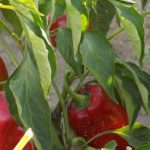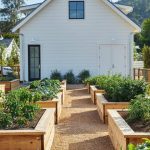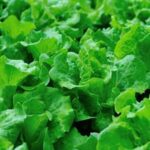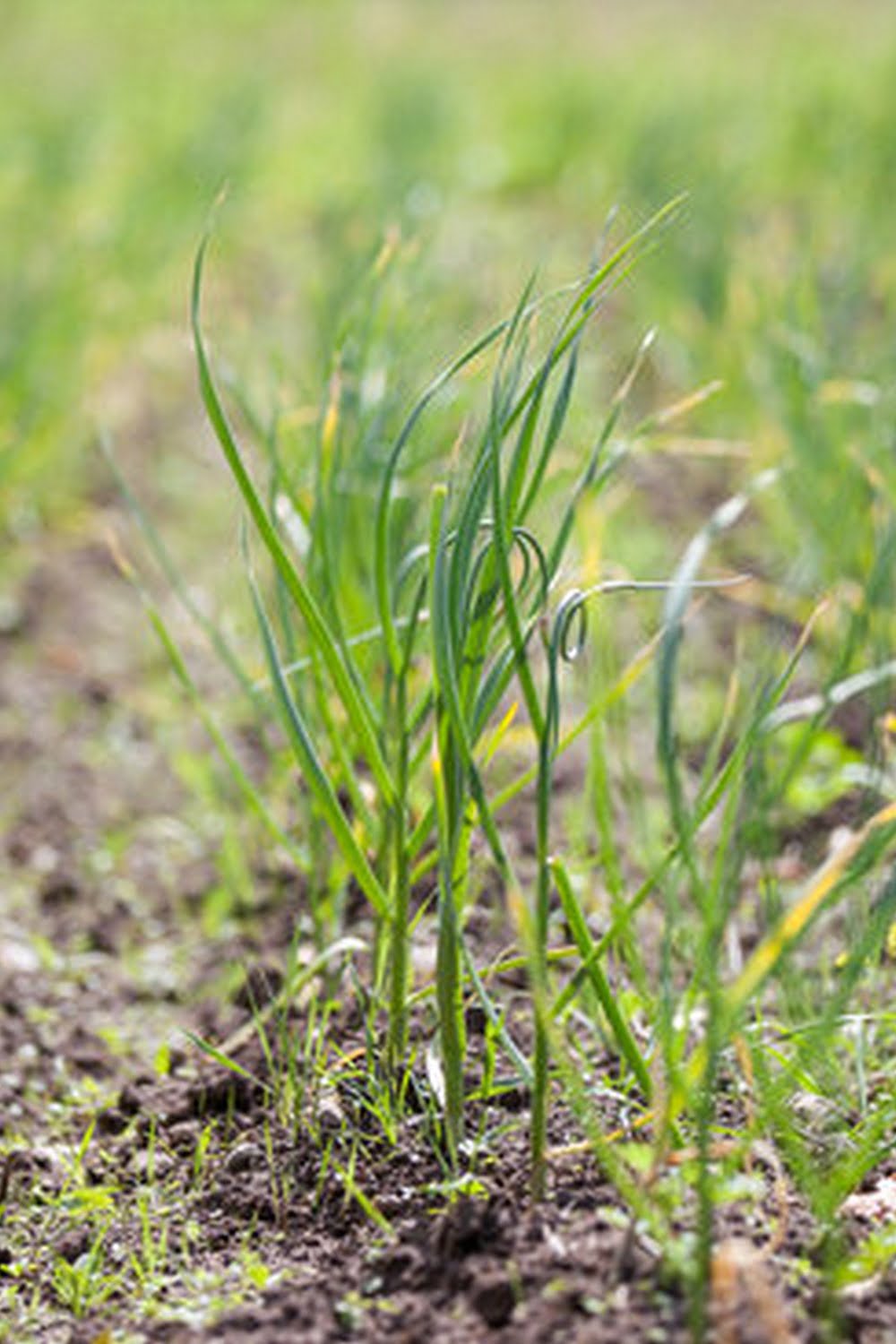Are you interested in starting your own vegetable container gardening plans? Container gardening offers a versatile and convenient way to grow a variety of vegetables, herbs, and fruits even in limited spaces.
Whether you have a small patio, balcony, or simply want to add some greenery to your home, vegetable container gardening is an excellent option to consider. This article will guide you through the essential steps for successful container gardening, from choosing the right containers and selecting the best vegetables to soil preparation, sunlight requirements, and pest management.
One of the key advantages of vegetable container gardening is the ability to control the growing environment for your plants. This makes it easier to optimize conditions such as soil quality, sunlight exposure, and water drainage.
Additionally, container gardening allows for greater flexibility in arranging your garden space and can be particularly beneficial for those with limited outdoor areas. By utilizing various types of containers such as pots, raised beds, and hanging baskets, you can maximize your available space while beautifying your surroundings with vibrant greenery.
In this section of the article, we will explore the numerous benefits of container gardening and why it’s an excellent choice for growing vegetables. From its versatility and flexibility to its suitability for urban environments or small living spaces, there are many reasons why vegetable container gardening has become increasingly popular among home gardeners.
Whether you’re a novice gardener or an experienced enthusiast looking to expand your growing options, container gardening offers a rewarding and sustainable way to cultivate fresh produce right at home.
Choosing the Right Containers
When it comes to vegetable container gardening plans, one of the first steps is choosing the right containers for your garden. There are several types of containers suitable for growing vegetables, each with its own benefits and considerations. Here are some options to consider:
- Pots: Traditional clay or plastic pots are a popular choice for container gardening. They come in various sizes, making them suitable for different types of vegetables. Pots are also easy to move around, allowing you to adjust their placement based on sunlight and space requirements.
- Raised Beds: Raised beds provide a deep growing area for vegetables and allow for better drainage. They can be made from wood, metal, or even plastic and offer the advantage of being at a comfortable working height, making them ideal for gardeners with limited mobility.
- Hanging Baskets: Hanging baskets are a creative way to maximize vertical space in a small garden or balcony. They work well for trailing vegetables like cherry tomatoes or strawberries and add visual interest to your container garden.
No matter which type of container you choose, it’s important to consider factors such as size, material, and drainage capabilities to ensure the best environment for your vegetable plants’ growth.
Once you have selected the right containers for your vegetable container gardening plans, it’s important to consider the specific needs of the vegetables you plan to grow in them. Some vegetables require more space for root growth while others thrive in compact environments. Additionally, some may need deeper containers than others in order to support their growth adequately.
Overall, the type of container you choose will largely depend on the amount of space available, as well as the specific needs of the vegetables you wish to grow. By carefully considering these factors when choosing your containers, you can set yourself up for a successful and bountiful vegetable container garden harvest.
Selecting the Right Vegetables
Container gardening offers the flexibility to grow a variety of vegetables in limited space, making it an excellent option for urban dwellers or those with small yards. When considering vegetable container gardening plans, it is important to choose the right vegetables that will thrive in such conditions. Factors such as space, sunlight, and soil play a crucial role in determining which vegetables are best suited for container gardening.
One of the key considerations when selecting vegetables for container gardening is understanding the space available for your containers. Compact or dwarf varieties of vegetables such as cherry tomatoes, bush beans, and mini bell peppers are ideal choices for smaller containers. Additionally, trailing or vining vegetables like cucumbers and squash can be grown in hanging baskets to maximize vertical space.
Another important factor to consider is sunlight. Vegetables need at least 6-8 hours of direct sunlight each day to thrive. When planning your vegetable container garden, make sure to place your containers in locations that receive adequate sunlight based on the requirements of the specific vegetables you have chosen to grow.
Finally, soil quality is essential for successful vegetable container gardening. Choose a high-quality potting mix that is well-draining and nutrient-rich to support healthy plant growth. Avoid using regular garden soil, as it may become compacted in containers and hinder root development. Consider mixing in compost or organic matter to enhance the soil fertility for your vegetable plants.
By carefully considering these factors and choosing the right vegetables for your specific container gardening setup, you can create a thriving and productive vegetable garden in even the smallest of spaces. With proper planning and care, you can enjoy a bountiful harvest of fresh produce right from your own patio or balcony.
Soil and Fertilizer Tips
When it comes to vegetable container gardening plans, one of the most important factors to consider is the soil and fertilizer you’ll be using. The right soil mix is crucial for the health and growth of your vegetables, as it provides the necessary nutrients and support for their roots. Furthermore, proper fertilizing ensures that your vegetables receive essential nutrients throughout their growing season, promoting healthy and bountiful harvests.
When choosing a soil mix for your vegetable containers, opt for a high-quality potting mix that is specifically formulated for container gardening. These mixes are designed to provide good drainage, aeration, and moisture retention, all of which are essential for healthy plant growth. Avoid using regular garden soil, as it tends to compact in containers and can hinder root development.
In addition to selecting the right soil mix, it’s important to fertilize your container vegetables regularly to ensure they receive the necessary nutrients for optimal growth. Consider using a balanced, slow-release fertilizer or organic options such as compost or aged manure. It’s also a good idea to supplement with liquid fertilizer every few weeks during the growing season to provide an extra boost of nutrients.
| Soil Mix | Fertilizer |
|---|---|
| High-quality potting mix | Slow-release fertilizer |
| Avoid regular garden soil | Consider organic options |
Container Placement and Sunlight
When it comes to vegetable container gardening plans, one of the most crucial factors to consider is the placement of your containers and ensuring they receive proper sunlight. The location of your containers will greatly impact the growth and success of your vegetables, so it’s important to choose the right spot for optimal growing conditions.
Understanding Sunlight Requirements
Different vegetables have varying sunlight requirements, so it’s essential to understand the needs of the specific plants you’re growing. Some vegetables, such as tomatoes and peppers, thrive in full sunlight and require at least 6-8 hours of direct sunlight per day.
On the other hand, leafy greens like lettuce and spinach can tolerate partial shade and may only need 3-4 hours of sunlight daily. Consider the sunlight requirements of each vegetable when determining the placement of your containers.
Choosing the Right Location
When selecting a location for your containers, look for areas that receive adequate sunlight throughout the day. South-facing areas typically receive the most sunlight, making them ideal for vegetable container gardening. If you’re limited on space or only have shaded areas available, consider using portable containers that can be moved to different spots throughout the day to maximize sun exposure.
Optimizing Growing Conditions
In addition to sunlight, consider other environmental factors such as wind exposure and temperature fluctuations that can affect your container garden. Protecting your containers from strong winds and providing adequate ventilation can help maintain optimal growing conditions for your vegetables. By carefully choosing the right location for your vegetable containers, you can ensure that your plants receive the necessary sunlight and environmental conditions for healthy growth.
Watering and Maintenance
When it comes to vegetable container gardening plans, proper watering and maintenance are crucial to the success of your garden. Here are some best practices for ensuring that your vegetables thrive in their containers:
1. Watering Schedule: One of the most important aspects of maintaining a healthy container garden is establishing a consistent watering schedule. Depending on the weather and the type of vegetables you are growing, you may need to water your containers daily or every few days. Be sure to check the moisture level of the soil before watering to avoid overwatering or underwatering.
2. Proper Drainage: Ensure that your containers have adequate drainage holes to prevent waterlogging, which can lead to root rot and other issues. Use a well-draining soil mix and consider adding a layer of gravel at the bottom of your containers to improve drainage.
3. Mulching: Mulching can help retain moisture in the soil and reduce water evaporation, especially during hot summer months. Consider using organic materials such as straw, wood chips, or compost as mulch around your vegetable plants.
4. Monitoring for Signs of Stress: Regularly inspect your vegetables for signs of stress, such as wilting leaves or yellowing foliage, which could indicate issues with watering or soil conditions. Adjust your watering schedule accordingly and consider providing shade during peak sunlight hours if necessary.
5. Seasonal Maintenance: As the seasons change, so will the needs of your container garden. Be mindful of temperature fluctuations and adjust your watering and maintenance routine accordingly.
By following these best practices for watering and maintaining vegetables in containers, you can ensure that your garden thrives throughout the growing season. With proper care and attention, you’ll be rewarded with a bountiful harvest of fresh homegrown vegetables for enjoying in delicious recipes all season long.
Pest and Disease Management
When it comes to vegetable container gardening plans, one of the key aspects to consider is pest and disease management. By taking preventative measures and utilizing natural remedies, you can ensure that your container garden remains healthy and productive.
Preventing Pests and Diseases
To prevent pests and diseases from affecting your container garden, it’s important to start with healthy soil and well-maintained plants. Choose high-quality soil mixtures that are free from pests and diseases, and regularly inspect your plants for any signs of trouble. Additionally, rotating your crops and practicing proper spacing can help reduce the risk of disease spread.
Natural Remedies
When it comes to managing pests and diseases in a container garden, many gardeners prefer to use natural remedies rather than chemical solutions. For example, introducing beneficial insects such as ladybugs or lacewings can help control harmful pests like aphids or spider mites. Other natural remedies include neem oil for controlling fungal infections, garlic spray for repelling insects, and diatomaceous earth for deterring crawling pests.
Organic Solutions
For those who adhere to organic gardening practices, there are a variety of organic solutions available for managing pests and diseases in a container garden. This may include using organic insecticidal soaps, introducing predatory nematodes to control soil-dwelling pests, or utilizing organic fungicides made from ingredients like copper or sulfur. By choosing organic solutions, you can effectively manage pests and diseases while maintaining an eco-friendly approach to gardening.
By implementing these strategies for preventing and managing pests and diseases in your vegetable container garden, you can enjoy a bountiful harvest of fresh produce without the worry of infestations or plant illnesses. Remember to regularly monitor your plants, provide proper care and maintenance, and remain proactive in ensuring the health of your container garden.
Harvesting and Enjoying
In conclusion, vegetable container gardening plans offer a convenient and rewarding way to grow your own fresh produce, even if you have limited space. The benefits of container gardening, such as the ability to control soil quality and placement, make it an attractive option for those with small yards, balconies, or patios. By choosing the right containers, selecting suitable vegetables, and providing proper care, anyone can enjoy the satisfaction of harvesting homegrown vegetables.
Once your vegetables are ready to harvest, the real joy of container gardening begins. There is something truly special about picking ripe tomatoes, crisp lettuce, or colorful peppers from your own containers. The freshness and flavor of homegrown produce are unmatched and give you a sense of pride in knowing that you’ve nurtured these plants from seedlings to fully grown vegetables.
Furthermore, using your fresh produce in delicious recipes adds another level of enjoyment to your container gardening experience. From simple salads to savory stir-fries and garden-fresh salsas, there are endless ways to enjoy the fruits of your labor.
Whether you’re a seasoned cook or just starting out in the kitchen, incorporating homegrown vegetables into your meals not only elevates the flavor but also allows you to savor the results of your hard work in a truly satisfying way.
Frequently Asked Questions
What Vegetables Grow Well Together in a Container?
Some vegetables that grow well together in a container include tomatoes, peppers, and basil. These plants have similar water and sun requirements, making them compatible companions in a small space.
How Deep Do Containers Need to Be for Vegetables?
The depth of containers for vegetables depends on the specific vegetable being grown. Generally, larger vegetables like tomatoes and peppers will need deeper containers, while smaller vegetables like lettuce and herbs can thrive in shallower ones.
What Are the Best Vegetables for Container Gardening?
The best vegetables for container gardening are those that don’t take up much space and have shallow root systems. This includes lettuce, spinach, radishes, green onions, cherry tomatoes, peppers, and herbs like basil and parsley. These plants are well-suited to thriving in confined spaces like containers.

If you’re looking to get into vegetable gardening, or are just looking for some tips on how to make your current garden better, then you’ve come to the right place! My name is Ethel and I have been gardening for years. In this blog, I’m going to share with you some of my best tips on how to create a successful vegetable garden.





